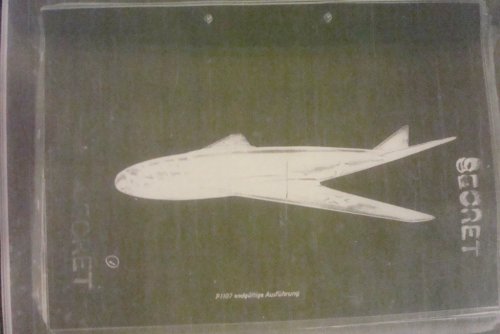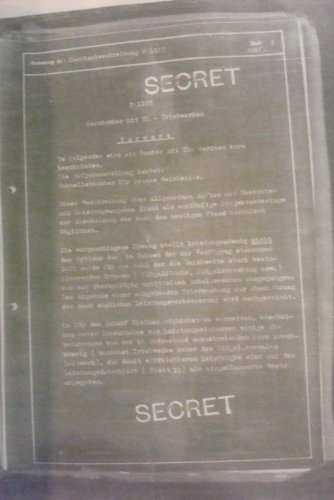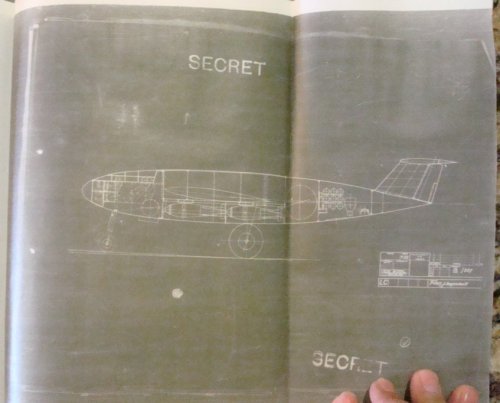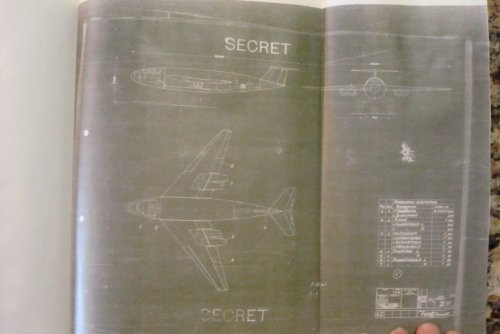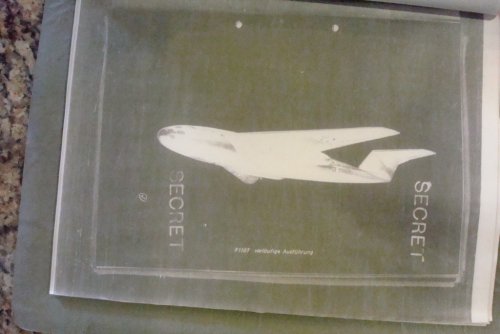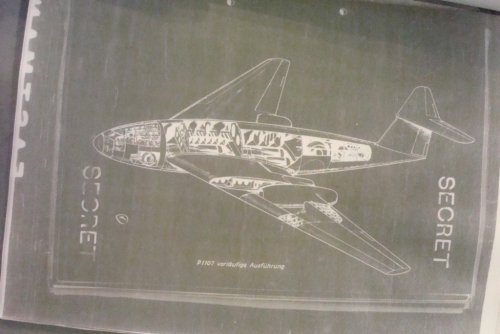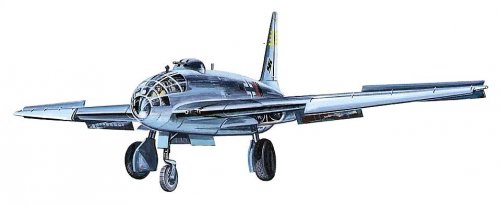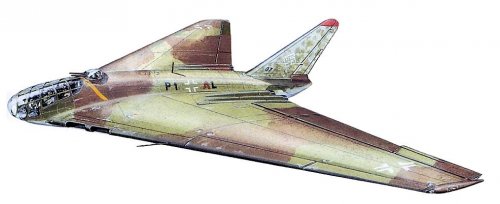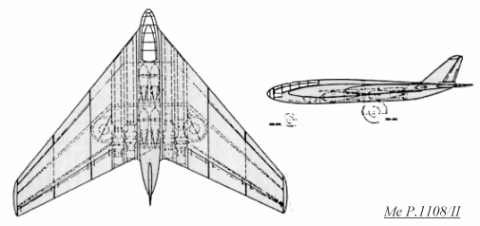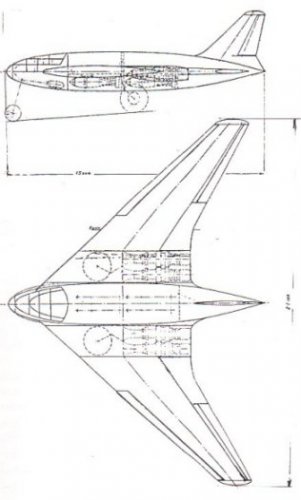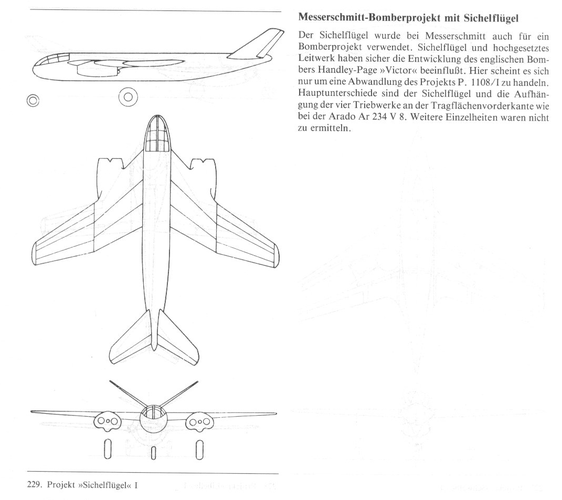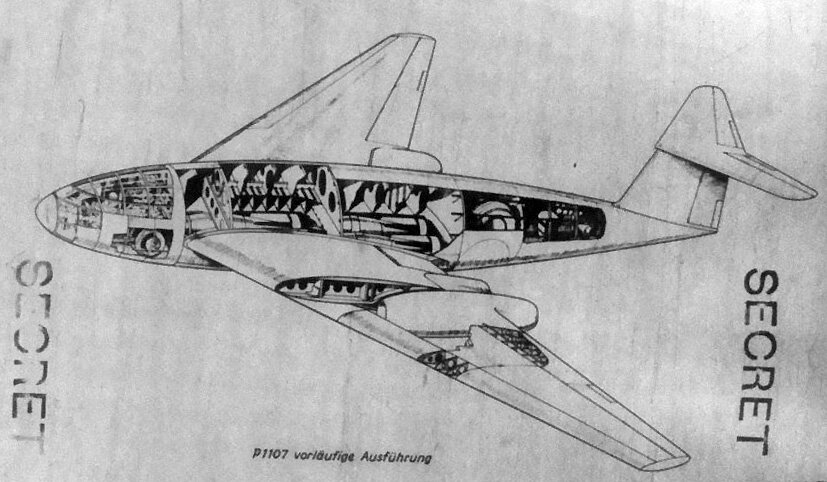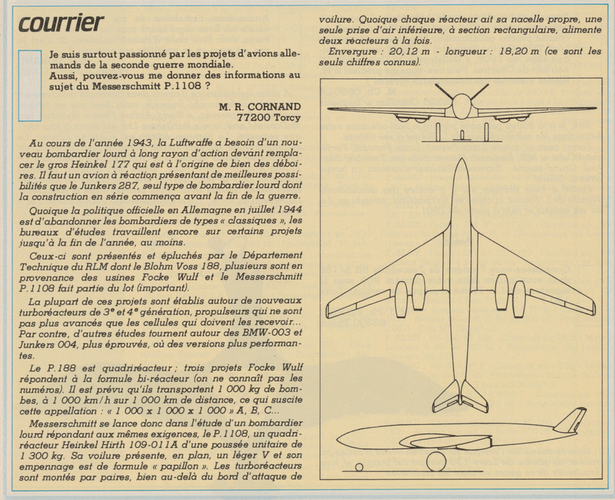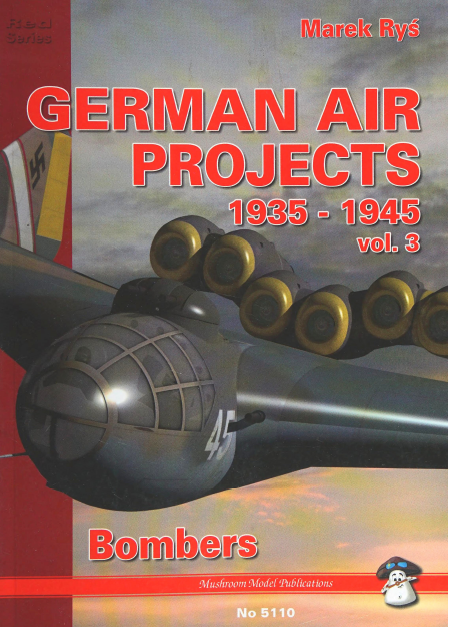- Joined
- 25 June 2009
- Messages
- 14,749
- Reaction score
- 6,112
In the autumn of 1944, Reichsmarschall Göring requested that Junkers, Arado and Messerschmitt design and produce very long range high speed bombers capable of carrying 4-ton bomb payloads. The goal was to be able to attack distant maritime convoys and strategic targets in both the U.S. and the Soviet Union.
In November 1944, Messerschmitt submitted a swept-wing four-jet bomber project designated P 1107. The four engines were mounted in nacelles by pairs under the wings. Though one of the variants considered had a V-tail, the other proposal was equipped with one of the earliest T-tail designs, so as to clear the tail surfaces from the exhaust of the turbojets. As for Junkers, they elected to work at improving their Ju 287 forward-swept wing design, which didn't go without some technical challenges despite the improvements it represented in both aerodynamics and construction.
Simultaneously, the Messerschmitt engineers worked on flying wing bomber designs designated P.1108/1 et P.1108/2. According to their calculations, these various bombers could carry the required payload over a distance of 7,800 kilometers at a speed of about 900 km/h. The range could even be extended to 9,600 kilometers for strategic reconnaissance versions. Junkers also worked — jointly with the DFS sailwing institute — on their own four-jet flying wing proposal, the EF 130.
In January 1945, the RLM examined the proposals made by all three manufacturers. Its experts notified in their report that the Messerschmitt P.1107/1 and /2 offered the highest speeds, but in terms of operational range, Horten's proposals were greatly superior to those of both Messerschmitt and Junkers. Not only was their construction easier, but the use of steel tubing and wood in the fabrication of Horten's wings was a decisive factor that led to that company being selected for that bomber program.
Despite the increasing damage caused by Allied bombings, the Messerschmitt design bureau continued to submit variants of their P.1108 flying wing proposal, but at the end of March 1945, Junkers and Messerschmitt were both ordered by the RLM to cease all development on long range bomber designs. Only the Horten brothers continued work on their Ho XVIII B-2 by personal request of Göring. Some unconfirmed RLM reports suggest that the production of the Ho XVIII B-2 had started on April 1st, 1945 at the Kahia underground factory in Thuringe, but no trace of that prototype — if ever it existed — has survived.
The beautiful and rare Messerschmitt P 1107 company document posted below was reproduced by the Air Documents Division of the the USAF's T-2 AMC Technical Intelligence service at Wright Field, Ohio. It was finally declassified in 1961 and appeared some time ago on eBay.
In November 1944, Messerschmitt submitted a swept-wing four-jet bomber project designated P 1107. The four engines were mounted in nacelles by pairs under the wings. Though one of the variants considered had a V-tail, the other proposal was equipped with one of the earliest T-tail designs, so as to clear the tail surfaces from the exhaust of the turbojets. As for Junkers, they elected to work at improving their Ju 287 forward-swept wing design, which didn't go without some technical challenges despite the improvements it represented in both aerodynamics and construction.
Simultaneously, the Messerschmitt engineers worked on flying wing bomber designs designated P.1108/1 et P.1108/2. According to their calculations, these various bombers could carry the required payload over a distance of 7,800 kilometers at a speed of about 900 km/h. The range could even be extended to 9,600 kilometers for strategic reconnaissance versions. Junkers also worked — jointly with the DFS sailwing institute — on their own four-jet flying wing proposal, the EF 130.
In January 1945, the RLM examined the proposals made by all three manufacturers. Its experts notified in their report that the Messerschmitt P.1107/1 and /2 offered the highest speeds, but in terms of operational range, Horten's proposals were greatly superior to those of both Messerschmitt and Junkers. Not only was their construction easier, but the use of steel tubing and wood in the fabrication of Horten's wings was a decisive factor that led to that company being selected for that bomber program.
Despite the increasing damage caused by Allied bombings, the Messerschmitt design bureau continued to submit variants of their P.1108 flying wing proposal, but at the end of March 1945, Junkers and Messerschmitt were both ordered by the RLM to cease all development on long range bomber designs. Only the Horten brothers continued work on their Ho XVIII B-2 by personal request of Göring. Some unconfirmed RLM reports suggest that the production of the Ho XVIII B-2 had started on April 1st, 1945 at the Kahia underground factory in Thuringe, but no trace of that prototype — if ever it existed — has survived.
The beautiful and rare Messerschmitt P 1107 company document posted below was reproduced by the Air Documents Division of the the USAF's T-2 AMC Technical Intelligence service at Wright Field, Ohio. It was finally declassified in 1961 and appeared some time ago on eBay.

